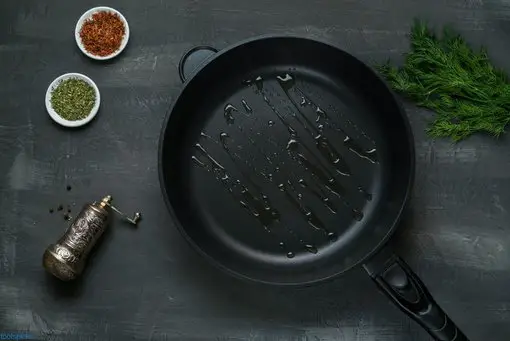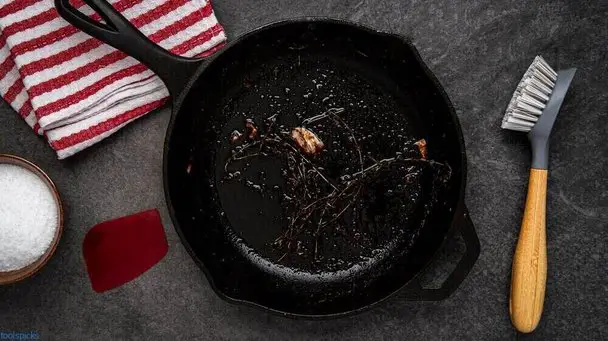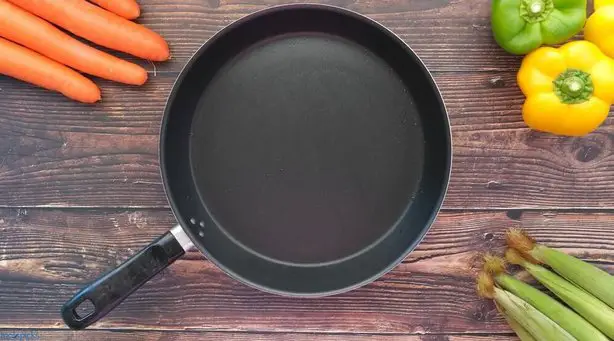Kitchenware proves to be quite expensive, so it is essential to do your research to make a worthwhile purchase. Many cooking shows show the use of skillets and frying pans, items commonly found in any chef’s kitchen.
However, if you are on a limited budget, you’ll likely have to choose between them, so it is important to know the differences between the items. While both skillets and frying pans are helpful in cooking, what makes one better than the other? Let’s find out.
Skillet vs Frying Pan – The main distinction
The basic distinction lies in the structure of these vessels. A frying pan is usually shallow, while a skillet is a few inches deeper than a frying pan. Another physical factor that may differentiate a skillet from a regular frying pan is the addition of a lid.
However, only knowing this difference doesn’t make picking one easier. To make a choice, you must look at your needs and see which utensil fits your demands. How does this physical difference impact the structural integrity of the utensil, and how does it impact your cooking?
Let’s review their characteristics to learn more.
Features of a skillet
Benefits
The most popular skillets are usually cast iron, which increases their heat retention, ensuring your food remains sizzling hot after being off the flames. The cast iron material enhances its ability to trap heat and ensures the utensil is suitable for high heat levels. In addition, the skillet is oven-safe, so if you are a baker too, a cast iron skillet should be on your checklist.
Another good thing is the depth of the skillet. Greater depth means a greater capacity. The deep sides and flat bottom can hold additional volumes of liquid or simply more food than a frying pan. So, if you are looking for an all-rounder with a substantial cooking surface that can cater to your needs, from cooking eggs to pasta or perfectly cooked stir-fry, then a skillet may be your best choice.
The wide and deep walls also serve perfectly for tossing and mixing your food without making a mess in your kitchen. In a pinch, you can use it as a sauté pan.
In addition to a cast iron skillet, they often come in stainless steel with a nonstick finish covering the flat bottom cooking surface and the straight sides. This nonstick coating makes the cookware easy to use by ensuring the food doesn’t stick and eliminating any hurdles in your culinary experience. Nonstick stainless steel skillets are easy to maintain as you won’t have to scrape food off them at the end of the day. Easier maintenance increases durability, making a stainless steel skillet a reliable long-term investment.
While there are many benefits of owning a stainless steel or cast iron skillet, are there any limitations that may undermine its advantages?
Limitations
The thick walls of a cast-iron skillet promote its ability to retain heat. However, these thick walls considerably increase the time taken for the skillet to heat up. If you want a quick stir-fry and are short on time, a skillet may not be your best bet.
Skillets are often heavier, making it harder to use them, and they may occupy more space in a cabinet. It’s also a hassle to clean them if they are too heavy or have a significantly large surface area.
While there may be some drawbacks associated with using a skillet, the advantages certainly outweigh them.
Features of a Frying Pan
Benefits
A frying pan traces its roots back to the early decades and remains an integral part of the modern culinary world. It has a shallow structure, sloped sides, and heats up significantly faster than a skillet pan. As a result, you can toss in all your ingredients and turn them into a mouth-watering dish in minimal time. So, if you enjoy preparing food in less time, a frying pan would be a suitable choice.
Frying pans are versatile and cater to most of your cooking needs. Their thin walls and sloping sides make handling easier and promote hassle-free fast cooking.
Frying pans come in a variety of non-stick and natural finishes. While each of these materials has pros and cons, non-stick fry pans remain a favorite due to their considerable benefits.
Limitations
Since a frying pan heats up very quickly, burnt food is a likely outcome if you are not careful with your timing. Moreover, a fry pan has a lower heat-retention ability than a skillet, so it may not be a viable serving container.
A fry pan has flared sides, giving it a lower capacity than a skillet; it may not be a suitable choice if you are cooking large portions or meals with high liquid content. A frying pan also has walls of a lower depth, making it unsuitable for cooking meals that require a lot of stirring and tossing.
So, Which One to Pick?
So far, we have reviewed the pros and cons of a frying pan and skillet and how they cater to your cooking needs. Hopefully, the information guides you to make a choice that best fits your needs.
To choose which is best for your needs, you first need to analyze your daily menu and the foods you prefer to cook.
If your daily menu consists of savory items, such as curries and stews, or if you like baking, consider investing in a skillet. Not only will it perfectly cater to your needs, but it will also prove to be a long-lasting, versatile investment.
If you have limited time and prefer quick meals such as omelets or stir-fry, then a nonstick frying pan with flared sides is your best friend.
Conclusion
While both have unique features, you don’t necessarily need to buy both utensils. You can use them interchangeably, and both are reliable options. The challenge is not to make the right choice but to make the one that is best for your cooking needs. If you are a culinary or food enthusiast, you may be inclined to buy both or invest in a pan set with a sauté pan, dutch oven, frying pan, and skillet. But if you are someone who needs minimum cookware, then choose wisely.



